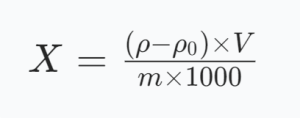- Method Overview
After digestion, the sample is atomized in a graphite furnace, and the absorbance is measured at 283.3 nm. Within a certain concentration range, the absorbance of lead is proportional to its content, and quantitative analysis is performed by comparison with a standard series.
- 2. Instruments and Reagents
2.1 Instruments and Equipment
2.1.1 Detection Instruments
Graphite Furnace Atomic Absorption Spectrophotometer (Lead Hollow Cathode Lamp)
Cooling Circulating Water System (Pump rated flow: 3.5 L/min)
Argon Gas (Purity≥99.99%)
2.1.2 Pretreatment Equipment
Micropipettes 1 each 100μL~1000μL, 1000μL~5000μL, 5~50μL
Volumetric Flasks Several 10 mL, 100 mL
Adjustable Electric Hot Plate Rated temperature: Room temperature~ 300℃
Analytical Balance Sensitivity: 1 mg and 0.1 mg
Watch Glasses Several
Erlenmeyer Flasks 150ml
2.2 Reagents
2.2.1 Reagents
Nitric Acid (MOS grade)
- 3. Operation Procedures
3.1 Sample Treatment
3.1.1 Preparation of Test Solution
Accurately weigh 1~2 g of the sample (accurate to 0.001 g) into an Erlenmeyer flask, evaporate to dryness on an electric hot plate, add 10 mL of nitric acid, and digest on the hot plate (reference conditions: 80°C/1 h, 120°C/1 h, 140°C/2 h, 160°C/2 h, heating up to 180°C). If the solution is brown, add more nitric acid and digest until white smoke is emitted. The solution should be colorless, transparent, or slightly yellow. After cooling, dilute to 10 mL in a volumetric flask with water, and prepare a reagent blank simultaneously.
3.1.2 Preparation of Standard Solutions
1) Preparation of Lead Standard Intermediate Solution (1.0 μg/mL):
Accurately pipette 0.1 mL of the lead national standard solution into a 100 mL volumetric flask, and dilute to the mark with nitric acid solution (1+99) to obtain the lead standard intermediate solution at 1.0 μg/mL.
- Preparation of Lead Standard Series:
Pipette 0.0, 0.5, 1.0, 2.0, 3.0 mL of the lead standard intermediate solution (1.0 μg/mL) into 100 mL volumetric flasks, respectively, and dilute to the mark with nitric acid (1+99) to obtain lead standard series of 0.0, 5.0, 10.0, 20.0, 30.0 ng/mL.
3.2 Sample Testing
1) Testing Conditions
Reference conditions for graphite furnace atomic absorption spectrophotometer:
Wavelength 283.3 nm
Spectral Bandwidth 0.4 nm
Element Lamp Current 2.0 mA
Background Correction Method Deuterium Lamp
Injection Volume 15 μL
- Probentests
Measure the absorbance of the standard solutions, blank test solution, and test solution in sequence. Subtract the absorbance of the zero standard solution from that of each standard solution, plot a working curve with mass concentration as the abscissa and corresponding absorbance as the ordinate. Determine the mass concentration of lead in the test solution from the working curve based on its measured absorbance.
3.3 Result Calculation

Wo:
X: Lead content in the sample, in milligrams per kilogram (mg/kg);
ρ: Mass concentration of lead in the sample solution, in nanograms per milliliter (ng/mL);
ρ0: Mass concentration of lead in the blank solution, in nanograms per milliliter (ng/mL);
V: Volume of the sample digestion solution after constant volume, in milliliters (mL);
m: Sample weight, in grams (g);
1000: Conversion coefficient.

